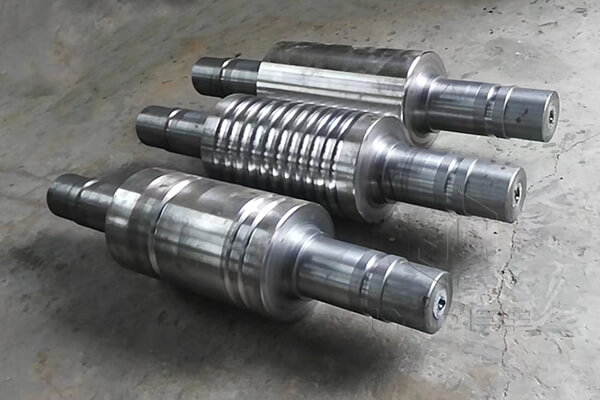Rolling mill roll includes work rolls and backup rolls, which are one of the key parts of the rolling mill and are installed in the window of the rolling mill archway. In the production of hot-rolled strip steel, the consumption of rolls is very large, especially the work rolls, which are always in direct contact with red hot steel. Therefore, finding out the cause of the damage to the roll and making corresponding solutions to improve the life of the roll and reduce the consumption of the roll is a problem that both the manufacturer and the user of the rolling mill are very concerned about. In the actual production process, the damage forms of the roll mainly include roll wear, roll crack, roll peeling, and roll breakage.

Roll wear is the same as other wear in the formation mechanism. From the perspective of tribology, it can be understood as the change of the macroscopic and microscopic dimensions of the roll. Generally discussed roll wear includes macroscopic wear and microscopic wear, which is specifically manifested as the reduction of roll diameter. However, roll wear is different from general wear in terms of geometry and physical conditions. For example, a certain point on the roll is in periodic contact with the rolled piece, and the iron oxide scale on the rolled piece enters the role of cooling liquid and lubricating fluid in the roll gap as abrasive particles and the influence of heat. Therefore, the causes of roll wear under actual working conditions are very complicated, and can be divided into the following categories according to the causes:
Mechanical wear or frictional wear: Wear caused by friction caused by the interaction between the work roll the rolling stock and the surface of the backup roll.
Chemical wear: the interaction between the roller surface and other surrounding media, resulting in the formation and destruction of the surface film.
Thermal wear: In the working state, the wear is caused by the drastic change of the temperature of the surface layer of the roll due to high temperature.
Work roll wear is mainly caused by the mutual friction between the work roll and the rolling piece and between the work roll and the backup roll. This friction includes sliding friction and rolling friction, and its wear mainly occurs at the part in contact with the rolled piece.
In the production process, since the strip forms a loop between the rolling mills, the wrap angle of the strip to the upper roll is increased, and the pressure on the contact area is increased. The retention of the regenerated iron scale on the upper surface of the strip also increases the wear of the upper roll. Therefore, the wear of the upper roll is greater than that of the lower roll. Since the drive end is connected to the motor, the wear on the drive side is greater than that on the silver side due to vibration.
The wear of the backup roll is mainly caused by the relative sliding and rolling with the working roll. The carbide particles on the surface of the work roll will grind the metal particles on the surface of the support roll, causing the support roll to wear. The amount of wear is related to factors such as the material of the roll, surface hardness and smoothness, the lateral distribution of pressure between the rolls, the relative slippage, and the rolling distance.
The practice has proved that due to the cooling water entrained with a large amount of oxide scale acting on the roll surface, the working conditions of the lower support silver are poor, thereby accelerating the wear and tear of the roll. In addition, the wear of the support roller is also related to the hardness of the roller surface of the upper and lower support rollers.
Due to the thermal stress generated by multiple temperature cycles, the roll is gradually broken, that is, crack, which is a micro-surface phenomenon that occurs in the thin layer on the surface of the roll. During rolling, the roll is subjected to severe alternating changes of cold and heat, resulting in severe strain on the surface of the roll, and thermal fatigue cracks are gradually generated. This kind of crack is formed by various factors such as thermal cycle stress, tensile stress, and plastic strain. Among them, the plastic strain makes the crack appear, and the tensile stress makes it expand.
Roll spalling is usually the roll damage caused by microcracks. Due to different mechanical factors, working conditions, and service periods, the backup rolls and work rolls of hot-rolled strip steel have different spalling methods and severity.
Please send us your request and we reply to you with in 24 hours.
Submit Request